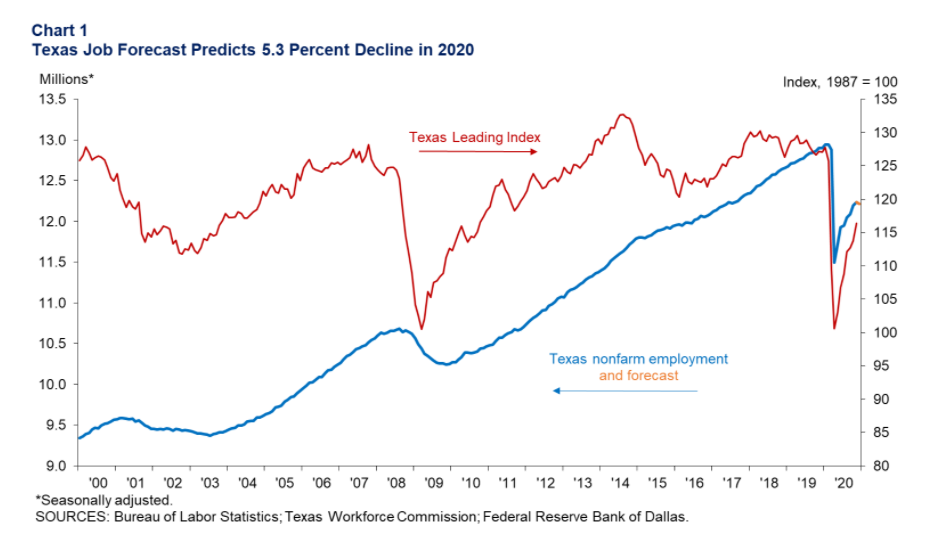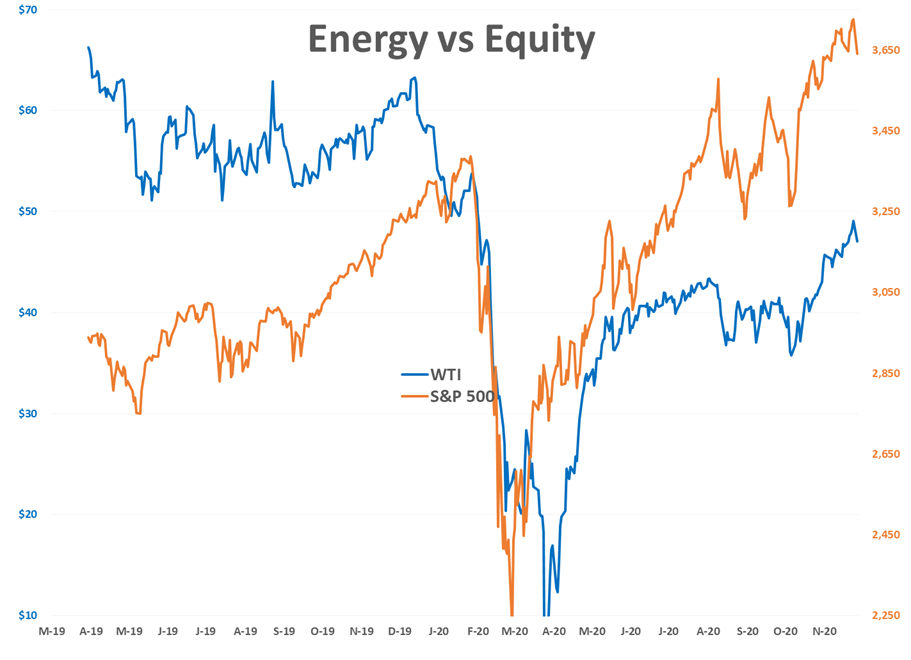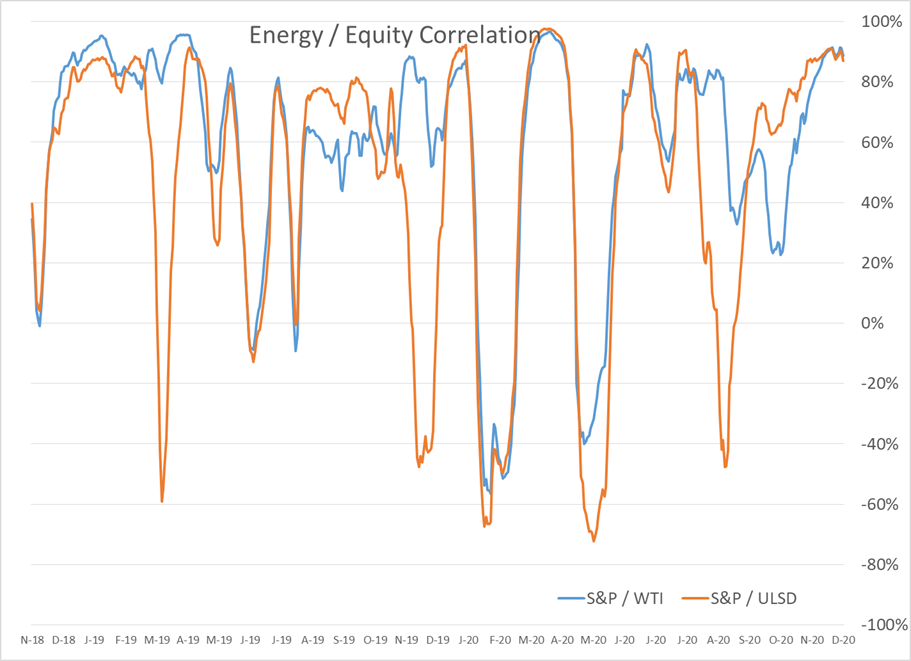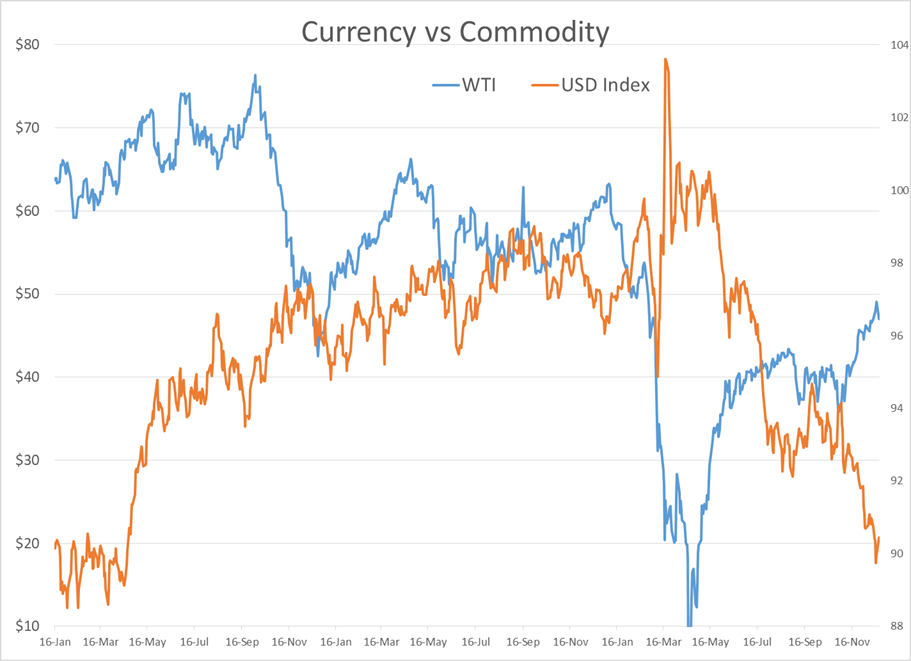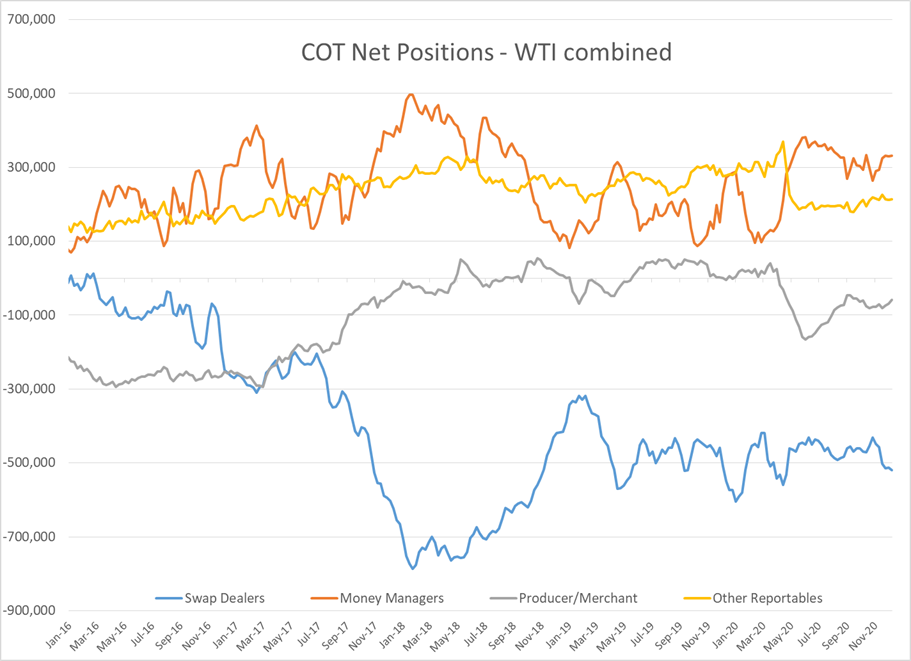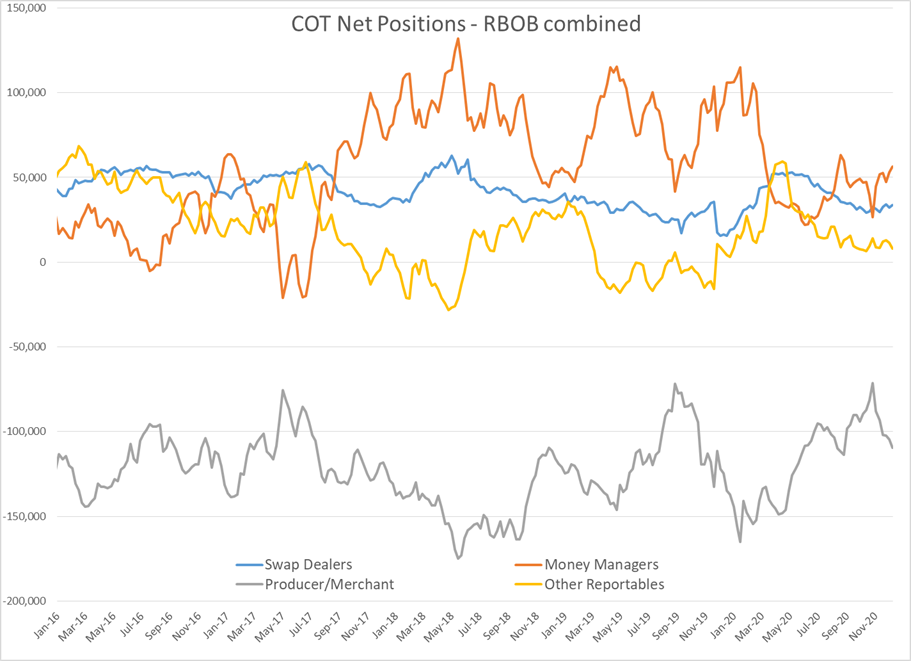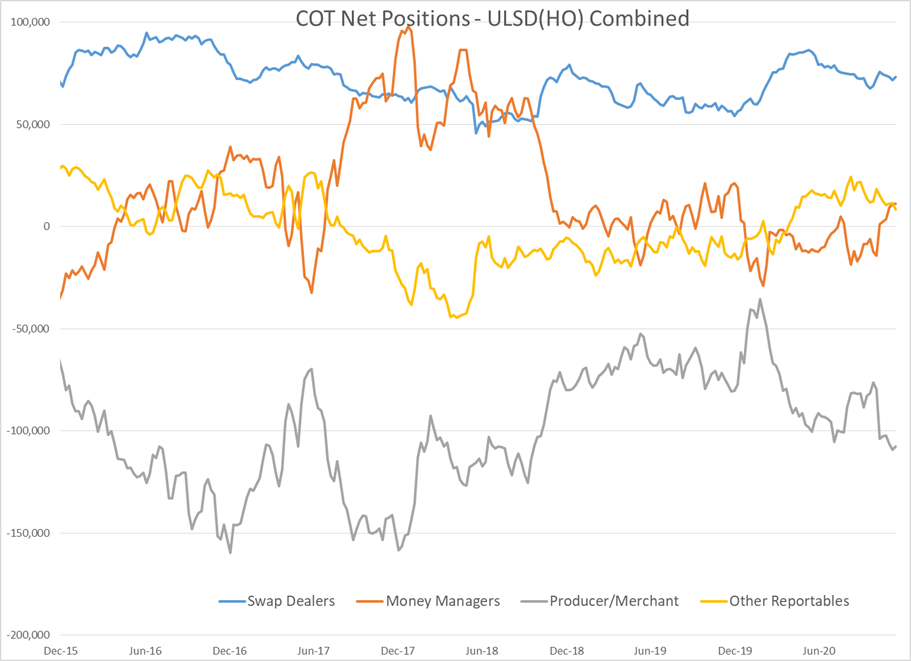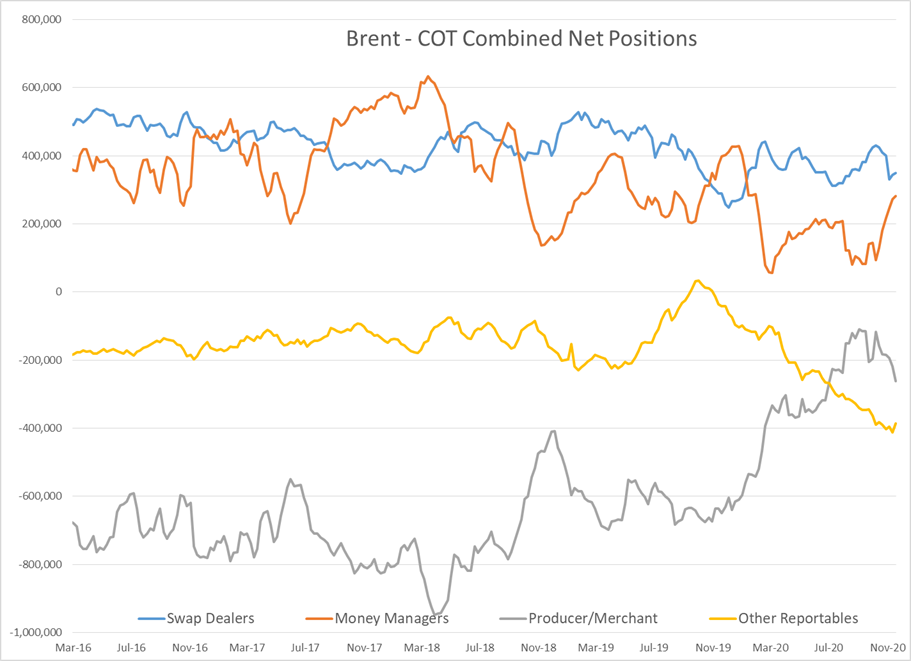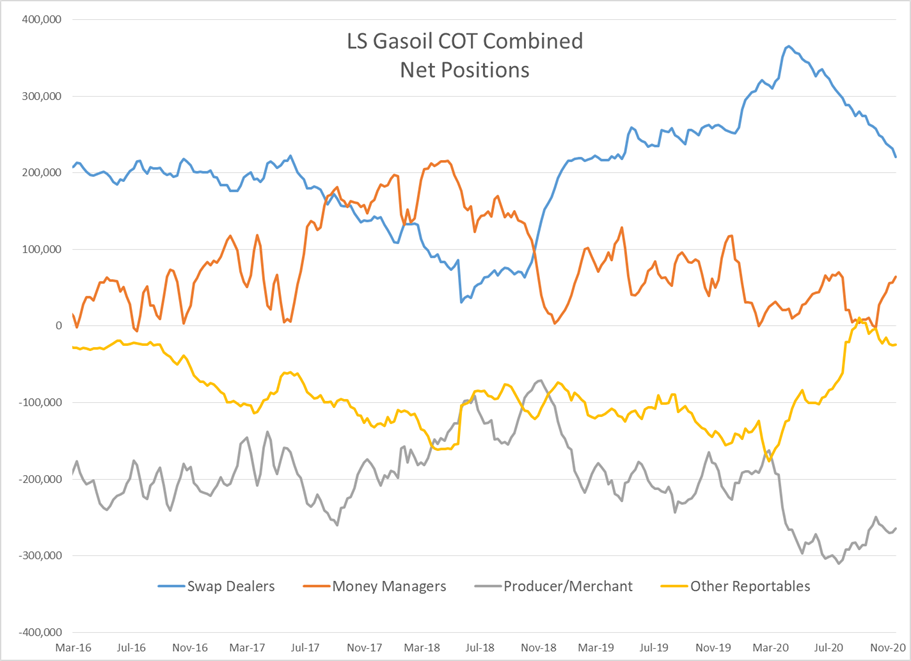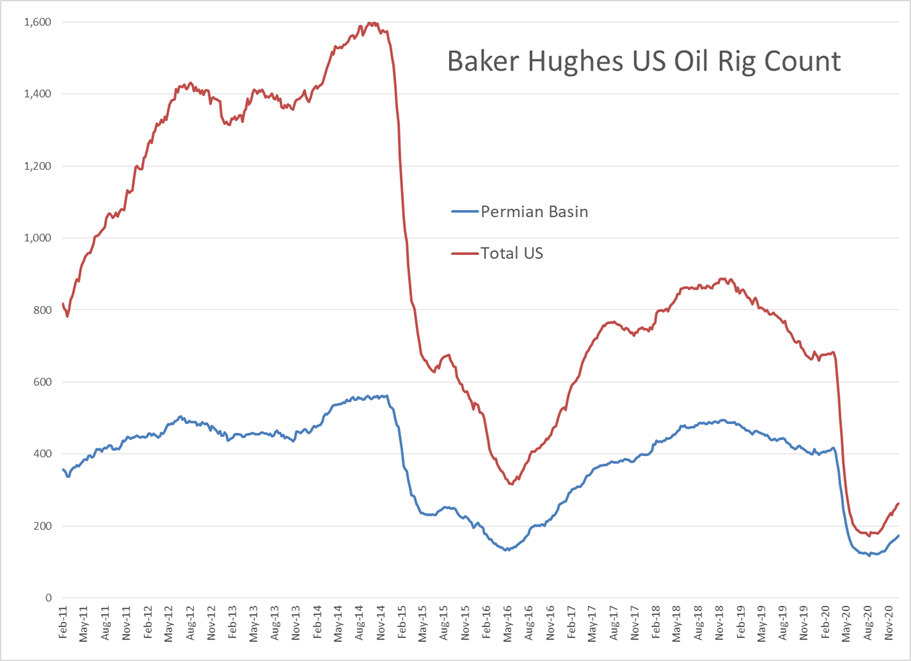Stairs Up, Elevator Down For Energy And Equity Markets

It’s a case of stairs up, elevator down for energy and equity markets as a broad selloff overnight wiped out all of last week’s gains in just a few hours. It appears there’s a bit of “buy the rumor, sell the news” in today’s big drop as the long-awaited congressional stimulus package was finally passed over the weekend, but it came with strings attached – most notably some restrictions on the FED’s emergency lending capabilities.
The U.S. Dollar has had a strong rally as it appears the money printing press will now have to get more approval before cranking up going forward, which matters more to Wall Street bankers than the $600 checks being sent to lower-income earners elsewhere. The bright side of this phenomenon is it brings back one of our favorite news characters, the “Head-in-hands trader” who tends to make an appearance any time we get a big sell-off.
In addition, there’s a new strain of COVID reported in England, that has much of Europe and Canada restricting travel to and from the UK as a result. Fears that the new strain could offset progress made with the vaccines seems to be spooking markets, but some reports suggest that the vaccines are still likely to be effective against the new strain.
Given the huge run-up in process we’ve seen since Nov. 1, we could easily see another 10-15 cents of downside for refined products in a normal correction of that rally unless buyers are able to get prices back above the upward sloping trend lines soon. That said, we saw similar rounds of steady buying capped off by a large sell-off in June, August and September, and each time the market recovered the losses within a week or two.
Money managers continued to add net-length across the petroleum contracts last week, enjoying the seventh straight week of gains. Their reaction to this selloff, the largest in nearly 2 months, may make a big difference in whether or not this ends up being just a correction, or the end of the line for the rally.
Baker Hughes reported a net increase of 5 oil rigs drilling in the U.S. last week. The Permian basin increased by 5, while the Eagle Ford, DJ and Woodford basins all decreased by 1, which were offset by gains in other smaller plays.
The increased drilling activity is also registering on the Dallas FED’s Texas jobs forecast, as one of several positive leading indicators suggesting the employment recovery from the spring COVID collapse should continue through December.
Add another refinery to the scrap heap: Portugal’s oil & gas company announced it would shutter the smaller of its two refineries (which has roughly 100mb/day capacity) permanently due to the impact of COVID, and the regulatory environment.
Click here to download a PDF of today's TACenergy Market Talk.
Latest Posts
Week 17 - US DOE Inventory Recap
The Energy Complex Is Trading Modestly Lower So Far This Morning With WTI Crude Oil Futures Leading The Way
Energy Futures Are Drifting Quietly Higher This Morning
Refined Products Holding Close To Break Even While Oil Prices Are Losing Just Under 1%
Social Media
News & Views
View All
Week 17 - US DOE Inventory Recap

The Energy Complex Is Trading Modestly Lower So Far This Morning With WTI Crude Oil Futures Leading The Way
The energy complex is trading modestly lower so far this morning with WTI crude oil futures leading the way, exchanging hands $1.50 per barrel lower (-1.9%) than Tuesday’s settlement price. Gasoline and diesel futures are following suit, dropping .0390 and .0280 per gallon, respectively.
A surprise crude oil build (one that doesn’t include any changes to the SPR) as reported by the American Petroleum Institute late Tuesday is taking credit for the bearish trading seen this morning. The Institute estimated an increase in crude inventories of ~5 million barrels and drop in both refined product stocks of 1.5-2.2 million barrels for the week ending April 26. The Department of Energy’s official report is due out at it’s regular time (9:30 CDT) this morning.
The Senate Budget Committee is scheduled to hold a hearing at 9:00 AM EST this morning regarding a years-long probe into climate change messaging from big oil companies. Following a 3-year investigation, Senate and House Democrats released their final report yesterday alleging major oil companies have internally recognized the impacts of fossil fuels on the climate since as far back as the 1960s, while privately lobbying against climate legislation and publicly presenting a narrative that undermines a connection between the two. Whether this will have a tangible effect on policy or is just the latest announcement in an election-yeardeluge is yet to be seen.
Speaking of deluge, another drone attack was launched against Russian infrastructure earlier this morning, causing an explosion and subsequent fire at Rosneft’s Ryazan refinery. While likely a response to the five killed from Russian missile strikes in Odesa and Kharkiv, Kyiv has yet to officially claim responsibility for the attack that successfully struck state infrastructure just 130 miles from Moscow.
The crude oil bears are on a tear this past week, blowing past WTI’s 5 and 10 day moving averages on Monday and opening below it’s 50-day MA this morning. The $80 level is likely a key resistance level, below which the path is open for the American oil benchmark to drop to the $75 level in short order.
Click here to download a PDF of today's TACenergy Market Talk.

Energy Futures Are Drifting Quietly Higher This Morning
Energy futures are drifting quietly higher this morning as a new round of hostage negotiations between Israel and Hamas seem to show relative promise. It seems the market is focusing on the prospect of cooler heads prevailing, rather than the pervasive rocket/drone exchanges, the latest of which took place over Israel’s northern border.
A warmer-than-expected winter depressed diesel demand and, likewise, distillate refinery margins, which has dropped to its lowest level since the beginning of 2022. The ULSD forward curve has shifted into contango (carry) over the past month as traders seek to store their diesel inventories and hope for a pickup in demand, domestic or otherwise.
The DOE announced it had continued rebuilding it’s Strategic Petroleum Reserve this month, noting the addition of 2.3 million barrels of crude so far in April. Depending on what the private sector reported for last week, Wednesday’s DOE report may put current national crude oil inventories (include those of the SPR) above the year’s previous levels, something we haven’t seen since April of 2022, two months after Ukraine war began.
The latest in the Dangote Refinery Saga: Credit stall-out, rising oil prices, and currency exchange.
Click here to download a PDF of today's TACenergy Market Talk.
